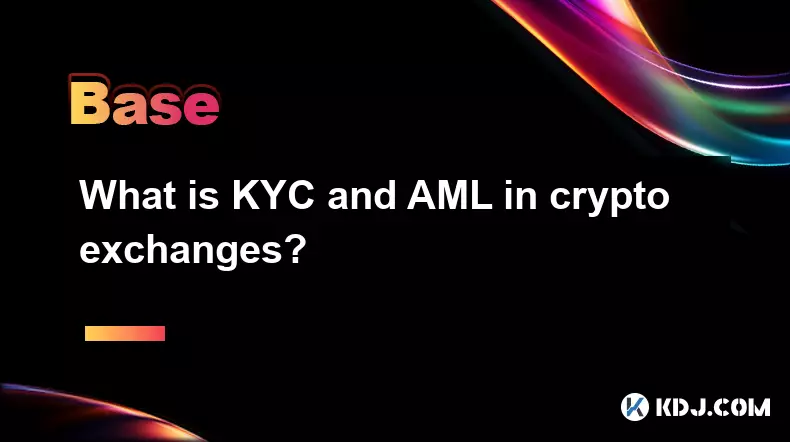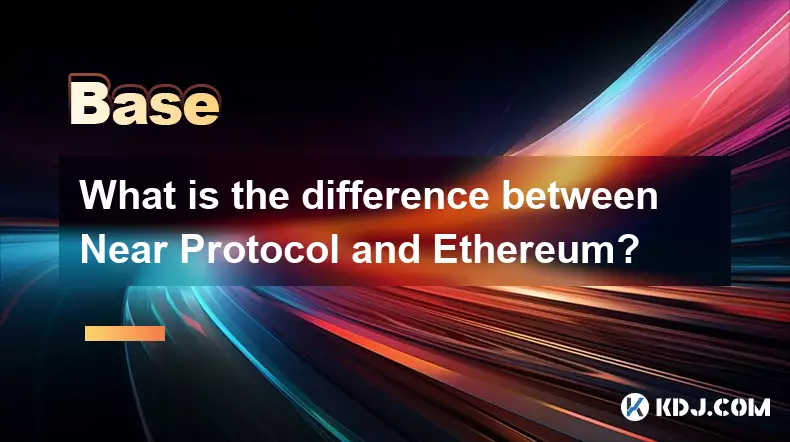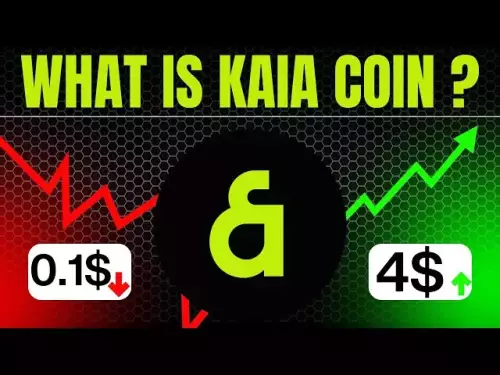-
 bitcoin
bitcoin $112715.707551 USD
-1.71% -
 ethereum
ethereum $4101.475385 USD
-3.01% -
 tether
tether $1.000644 USD
-0.02% -
 bnb
bnb $1207.619465 USD
-6.77% -
 xrp
xrp $2.501451 USD
-3.98% -
 solana
solana $202.947124 USD
-3.32% -
 usd-coin
usd-coin $1.000295 USD
0.04% -
 dogecoin
dogecoin $0.203884 USD
-4.47% -
 tron
tron $0.317154 USD
-1.72% -
 cardano
cardano $0.695009 USD
-4.43% -
 hyperliquid
hyperliquid $38.853961 USD
-8.23% -
 chainlink
chainlink $18.988674 USD
-4.64% -
 ethena-usde
ethena-usde $1.000233 USD
-0.03% -
 stellar
stellar $0.337050 USD
-3.63% -
 bitcoin-cash
bitcoin-cash $536.861728 USD
-1.28%
What is KYC and AML in crypto exchanges?
KYC and AML regulations enhance security and compliance on crypto exchanges, restricting access until users verify their identity, but enabling higher limits and fiat integration.
Aug 29, 2025 at 09:00 pm

Understanding KYC in Cryptocurrency Exchanges
1. KYC, or Know Your Customer, is a mandatory verification process used by crypto exchanges to confirm the identity of their users. This involves collecting personal information such as government-issued IDs, proof of address, and sometimes biometric data. The goal is to ensure that individuals using the platform are who they claim to be.
2. Exchanges implement KYC procedures to comply with international financial regulations and reduce the risk of illegal activities. Without proper identification, bad actors could exploit anonymous accounts for money laundering or fraud. By verifying each user, platforms can establish trust and accountability within their ecosystems.
3. The KYC process often restricts certain features until completion, such as withdrawal limits or access to advanced trading tools. Users may find this intrusive, but it serves as a foundational layer of security for both the exchange and its clients. Some decentralized exchanges avoid KYC, but they typically offer fewer services and lower liquidity.
4. Regulatory bodies in countries like the United States, the European Union, and Japan require exchanges to enforce KYC protocols. Non-compliance can lead to heavy fines or shutdowns. As global oversight increases, even offshore exchanges are under pressure to adopt similar standards.
5. While privacy advocates criticize KYC for compromising user anonymity, the reality is that most mainstream platforms operate within legal frameworks that demand transparency. Users seeking full anonymity must rely on peer-to-peer trading or non-custodial wallets, which come with their own risks.
The Role of AML in Crypto Trading Platforms
1. AML, or Anti-Money Laundering, refers to a set of policies and procedures designed to detect and prevent illicit financial flows through cryptocurrency networks. These measures go hand-in-hand with KYC, as verified identities make it easier to trace suspicious transactions.
2. Crypto exchanges use AML software to monitor transaction patterns in real time. Unusual activities—such as rapid transfers between multiple wallets or large deposits followed by quick withdrawals—trigger alerts for further investigation. Suspicious behavior may lead to account freezing or reporting to authorities.
3. AML systems often integrate blockchain analytics tools that track the origin and movement of funds across public ledgers. Companies like Chainalysis and Elliptic provide these services to exchanges, helping them identify addresses linked to darknet markets, ransomware attacks, or sanctioned entities.
4. Regulatory agencies such as the Financial Action Task Force (FATF) have issued guidelines requiring virtual asset service providers to apply AML controls. The 'Travel Rule' mandates that exchanges share sender and receiver information for transactions above a certain threshold, enhancing traceability.
5. Smaller exchanges may struggle with the cost and complexity of implementing robust AML systems. However, failure to do so exposes them to legal action and reputational damage. As institutional investors enter the space, compliance becomes a prerequisite for legitimacy.
How KYC and AML Impact User Experience
1. New users on regulated exchanges must go through an onboarding process that includes uploading documents and waiting for approval. This can take hours or even days, depending on the platform's verification speed and the quality of submitted materials.
2. Once verified, users gain access to higher trading limits, fiat on-ramps, and customer support services that are unavailable to unverified accounts. This creates a tiered system where compliance directly correlates with functionality.
3. Some users bypass KYC by using decentralized exchanges (DEXs) or privacy coins like Monero. However, these alternatives often lack user-friendly interfaces and deep liquidity pools, making them less practical for large-scale trading.
4. There is growing concern about data security, as centralized exchanges become targets for hackers due to the volume of sensitive information they store. Breaches can expose users’ identities and financial details, leading to fraud or identity theft.
5. Despite the friction, many traders accept KYC and AML as necessary trade-offs for stability and integration with traditional finance. As crypto adoption grows, seamless and secure verification methods—such as decentralized identity solutions—are being explored to balance privacy and compliance.
Frequently Asked Questions
What happens if I don’t complete KYC on a crypto exchange?You may be restricted from withdrawing funds, making large trades, or depositing fiat currency. Some platforms allow limited trading but block key features until verification is complete.
Can a crypto exchange reverse a transaction under AML rules?Exchanges cannot reverse blockchain transactions, but they can freeze assets in their custody if they suspect illegal activity. They may also report the transaction to regulators or law enforcement.
Are all crypto exchanges required to follow AML regulations?Not all, but most exchanges operating in regulated jurisdictions must comply. Those that serve customers in the U.S., EU, or other regions with strict financial laws are legally obligated to enforce AML policies.
Do KYC and AML apply to peer-to-peer crypto transactions?In direct P2P trades using non-custodial wallets, there is no central authority to enforce KYC or AML. However, if either party uses a regulated exchange to on-ramp or off-ramp funds, those points of exchange will still require verification.
Disclaimer:info@kdj.com
The information provided is not trading advice. kdj.com does not assume any responsibility for any investments made based on the information provided in this article. Cryptocurrencies are highly volatile and it is highly recommended that you invest with caution after thorough research!
If you believe that the content used on this website infringes your copyright, please contact us immediately (info@kdj.com) and we will delete it promptly.
- Crypto News, Crypto Gems, Live Today: Unearthing the Next 1000x Crypto
- 2025-10-15 20:25:16
- Ethereum, Altcoins, and Investment: Navigating the Crypto Landscape in 2025
- 2025-10-15 20:25:16
- EUROD: ODDO BHF's Stablecoin Signals a Euro-Powered Crypto Future
- 2025-10-15 20:30:01
- Mark Yusko on Bitcoin: Why Government Buying is Inevitable
- 2025-10-15 20:30:01
- Kart Rumble: The Meme Coin Gaining Traction in Web3 Gaming
- 2025-10-15 20:30:01
- Yield Guild Games (YGG) Lands on Upbit: A New Chapter for P2E?
- 2025-10-15 20:30:15
Related knowledge

How do decentralized identity (DID) solutions work?
Oct 14,2025 at 11:36pm
Understanding Decentralized Identity in the Blockchain Ecosystem1. Decentralized identity (DID) solutions are built on blockchain networks, allowing i...

What is the difference between Near Protocol and Ethereum?
Oct 15,2025 at 08:01am
Near Protocol and Ethereum: Core Architectural Differences1. Near Protocol operates on a sharded blockchain architecture known as Nightshade, which al...

What does it mean for code to be "open source" in crypto?
Oct 12,2025 at 01:54pm
Understanding Open Source in the Cryptocurrency Ecosystem1. In the context of cryptocurrency, open source refers to software whose code is publicly ac...

What is the purpose of a "testnet"?
Oct 12,2025 at 09:01am
Understanding the Role of Testnets in Blockchain Development1. A testnet serves as a parallel version of a blockchain network, designed specifically f...

How to avoid phishing scams in crypto?
Oct 13,2025 at 06:18pm
Understanding Common Crypto Phishing Tactics1. Cybercriminals frequently use fake websites that mirror legitimate crypto exchanges or wallet platforms...

What is the difference between single-collateral and multi-collateral Dai?
Oct 12,2025 at 05:18pm
Understanding Single-Collateral Dai1. Single-Collateral Dai (SCD) was the original version of the Dai stablecoin launched by MakerDAO in 2017. It allo...

How do decentralized identity (DID) solutions work?
Oct 14,2025 at 11:36pm
Understanding Decentralized Identity in the Blockchain Ecosystem1. Decentralized identity (DID) solutions are built on blockchain networks, allowing i...

What is the difference between Near Protocol and Ethereum?
Oct 15,2025 at 08:01am
Near Protocol and Ethereum: Core Architectural Differences1. Near Protocol operates on a sharded blockchain architecture known as Nightshade, which al...

What does it mean for code to be "open source" in crypto?
Oct 12,2025 at 01:54pm
Understanding Open Source in the Cryptocurrency Ecosystem1. In the context of cryptocurrency, open source refers to software whose code is publicly ac...

What is the purpose of a "testnet"?
Oct 12,2025 at 09:01am
Understanding the Role of Testnets in Blockchain Development1. A testnet serves as a parallel version of a blockchain network, designed specifically f...

How to avoid phishing scams in crypto?
Oct 13,2025 at 06:18pm
Understanding Common Crypto Phishing Tactics1. Cybercriminals frequently use fake websites that mirror legitimate crypto exchanges or wallet platforms...

What is the difference between single-collateral and multi-collateral Dai?
Oct 12,2025 at 05:18pm
Understanding Single-Collateral Dai1. Single-Collateral Dai (SCD) was the original version of the Dai stablecoin launched by MakerDAO in 2017. It allo...
See all articles


























![Staking ATH: How To Stake $ATH in October 2025 with 523% APY — [Step-By-Step Guide] Staking ATH: How To Stake $ATH in October 2025 with 523% APY — [Step-By-Step Guide]](/uploads/2025/10/15/cryptocurrencies-news/videos/staking-ath-stake-ath-october-apy-stepstep-guide/68eef94d80903_image_500_375.webp)















































